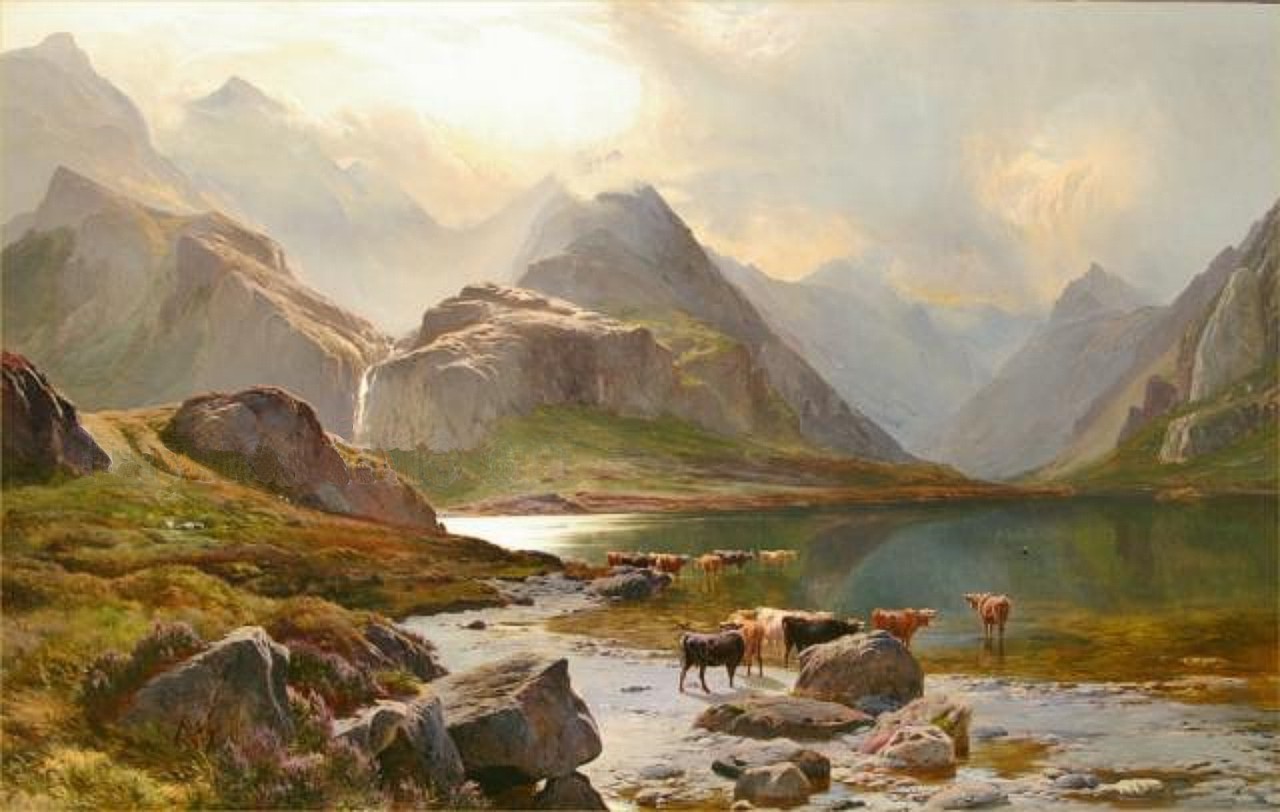Loch Coruisk on:
[Wikipedia]
[Google]
[Amazon]
Loch Coruisk (, meaning the "Cauldron of Waters") is an inland fresh-water
 The loch is accessible by boat from Elgol, or on foot from
The loch is accessible by boat from Elgol, or on foot from
 The loch has been painted by, among many others, William Daniell (1769–1837),
The loch has been painted by, among many others, William Daniell (1769–1837),
loch
''Loch'' ( ) is a word meaning "lake" or "inlet, sea inlet" in Scottish Gaelic, Scottish and Irish Gaelic, subsequently borrowed into English. In Irish contexts, it often appears in the anglicized form "lough". A small loch is sometimes calle ...
, lying at the foot of the Black Cuillin in the Isle of Skye
The Isle of Skye, or simply Skye, is the largest and northernmost of the major islands in the Inner Hebrides of Scotland. The island's peninsulas radiate from a mountainous hub dominated by the Cuillin, the rocky slopes of which provide some o ...
, in the Scottish Highlands
The Highlands (; , ) is a historical region of Scotland. Culturally, the Highlands and the Scottish Lowlands, Lowlands diverged from the Late Middle Ages into the modern period, when Scots language, Lowland Scots language replaced Scottish Gae ...
.
Loch Coruisk is reputed to be the home of a kelpie
A kelpie, or water kelpie (Scottish Gaelic: '' each-uisge''), is a mythical shape-shifting spirit inhabiting lochs in Scottish folklore. Legends of these shape-shifting water-horses, under various names, spread across the British Isles, appea ...
or water horse, a shape-shifting creature that can assume human form.
Geography
 The loch is accessible by boat from Elgol, or on foot from
The loch is accessible by boat from Elgol, or on foot from Sligachan
Sligachan () is a small settlement on Skye, Scotland. It is close to the Cuillin mountains and provides a good viewpoint for seeing the Cuillin, Black Cuillin mountains.
Amenities
Sligachan is situated at the junction of the roads from Portree, ...
(approximately distance). It is also possible to walk from Elgol, but one section of the path ("the Bad Step") presents some potential difficulties for the nervous or inexperienced.
The northern end of the loch is ringed by the Black Cuillin, often wreathed in cloud. From the southern end the Scavaig River, only a few hundred yards long, discharges into a sea loch, Loch Scavaig. The loch is nearly long, but only about wide.
Literature
SirWalter Scott
Sir Walter Scott, 1st Baronet (15 August 1771 – 21 September 1832), was a Scottish novelist, poet and historian. Many of his works remain classics of European literature, European and Scottish literature, notably the novels ''Ivanhoe'' (18 ...
visited the loch in 1814 and described it vividly:
:“Rarely human eye has known
:A scene so stern as that dread lake,
:With its dark ledge of barren stone...”
Lord Tennyson
Alfred Tennyson, 1st Baron Tennyson (; 6 August 1809 – 6 October 1892) was an English poet. He was the Poet Laureate during much of Queen Victoria's reign. In 1829, Tennyson was awarded the Chancellor's Gold Medal at Cambridge for one of ...
reported more prosaically:
:“Loch Coruisk, said to be the wildest scene in the Highlands, I failed in seeing. After a fatiguing expedition over the roughest ground on a wet day we arrived at the banks of the loch, and made acquaintance with the extremest tiptoes of the hills, all else being thick wool-white fog.”
Mark Haddon
Mark Haddon (born 26 September 1962) is an English novelist, best known for ''The Curious Incident of the Dog in the Night-Time'' (2003). He won the Whitbread Award, the Dolly Gray Children's Literature Award, the Guardian Prize, and a Commonweal ...
used the remote location of the loch for a portal in the 1992 children's novel ''Gridzbi Spudvetch!'', re-issued in 2009 as '' Boom!''. A description of the path from Elgol (including a traverse of The Bad Step) is included in the narrative, as is the Memorial Hut.
Robert Macfarlane visited the loch and its valley whilst writing his 2007 travelogue ''The Wild Places'', and a description of the area forms the book's third chapter.Macfarlane, Robert (2007) ''The Wild Places.'' Granta Publications, pp. 43-62.
Art
 The loch has been painted by, among many others, William Daniell (1769–1837),
The loch has been painted by, among many others, William Daniell (1769–1837), J. M. W. Turner
Joseph Mallord William Turner (23 April 177519 December 1851), known in his time as William Turner, was an English Romantic painter, printmaker and watercolourist. He is known for his expressive colouring, imaginative landscapes and turbu ...
(1775–1851), Sidney Richard Percy (1821–1886) and Alexander Francis Lydon (1836–1917)
References
{{Reflist Coruisk Coruisk